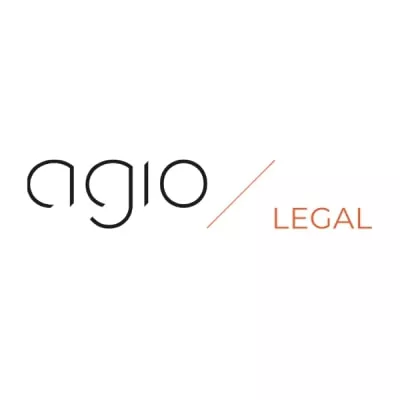Are Belgian organizations ready for blockchain and DAO?
Introduction
The Internet and its numerous technological applications have become the backbone of our society by facilitating the exchange of information and data. Blockchain adds another layer by allowing parties to conclude drafted contracts when predetermined terms and conditions are met and thus without the intervention of a central, trusted third party. But is Belgium ready for this technology and how can it help a Belgian organization? In this article, we review the regulatory framework of smart contracts in Belgium, and more specifically Decentralized Autonomous Organizations (DAO), and highlight how a Belgian organization can become more digital.
In essence, a smart contract is a self-executing contract with the terms of the agreement between buyer and seller being directly written into lines of code. The code and the agreements contained therein are stored and replicated on a blockchain network. Smart contracts allow for the automation of the contracting processes, as well as the enforcement of the terms of the contract. They can be used to facilitate, verify, and enforce the negotiation or performance of a contract. Blockchain implemented applications save time and money, reduce fraud and increase efficiency in the process since the data of the register is maintained by each user of the system.
A Decentralized Autonomous Organization (DAO) is one of the most anticipated applications of blockchain technology, where the rules of governance and decision-making (the articles of association or bylaws) of an organization are laid down in smart contracts. In principle, they cannot be violated once these are in force. This guarantees a better management of rights within and internal and external supervision of the organization. In addition, DAOs allow for the involvement of a wide range of stakeholders - whether or not they know each other - in the governance of the organization.
In its most simplistic form, companies can be seen as an amalgam of commitments to various stakeholders such as shareholders, employees, consumers, suppliers, etc. These commitments could be executed automatically, thereby reducing the need for human intervention. Smart contracts enable us to coordinate in a trustless, decentralized and anonymous way to make collective decisions for a certain cause. Trust is needed, but this trust is based on the code in the smart contract. But is the Belgian corporate (governance) landscape ready to become digital?
The digital wind of change
The platform economy backed up by our project culture has disrupted the traditional governance model of a centralized and hierarchical organization. Organizations are increasingly opting for a flat rather than a hierarchical approach. For example, the Agile & Lean method advocates granting smaller teams the necessary autonomy and responsibility to carry out decisions and tasks. Eliminating (superfluous) intermediate levels leads to faster and more qualitative decisions. The digital transformation trend in which many companies are fundamentally changing their existing business and governance model by applying new technologies is already taking place. This paradigm shift of decentralization can be taken to new levels by blockchain technology and smart contracts. DAO principles such as transparency, a collaborative mindset and increasing stakeholder participation could bridge the gap between the current digital transformation landscape and a fully operational DAO implementation.
Digitalization is also (slowly) on the rise within the Belgian corporate world. The new Companies and Associations Code makes it possible in certain procedures to communicate validly through e-mail and most importantly allows limited liability companies to keep their shareholder register electronically. Smart contracts that are cryptographically-secured on the blockchain can play a very important role to make an electronic shareholder register completely tamper-proof and privacy compliant, enabling a whole range of new governance tools. It could be a first small step towards a real DAO.
The First DAO and its genesis problem
Vitalik Buterin, creator of the Ethereum network allowing smart contracts to run on the blockchain, defined DAO as follows: “a virtual entity that has a certain set of members or shareholders which have the right to spend the entity's funds and modify its code. The members would collectively decide on how the organization should allocate the funds… A DAO essentially replicates the legal trappings of a traditional company or non-profit but using only cryptographic blockchain technology for enforcement.”
The best-known example of a Decentralized Autonomous Organization is The DAO. Investors were given freely transferable “DAO tokens” (similar to a share in a company) in exchange for the “ether” (currency on the Ethereum network) they invested in The DAO. These tokens gave the investors (tokenholders) direct control and influence. The tokenholders could vote on investment proposals. If the tokenholders approved a project, the smart contract would automatically transfer the necessary funds (i.e. ether) to the ethereum address (wallet) of the proposer.
As noted earlier, the rules on governance and decision-making of
an organization cannot be violated once they are laid down in smart
contracts. However, the automatic enforceability and the principle
of irreversibility of smart contracts also applies if these rules
are inherently flawed.
A hacker has managed to exploit a bug from The DAO in 2016,
resulting in a malicious transfer of more than a third of its
funds. The hack resulted in an exceptional ‘hard fork',
essentially rolling back unwanted transactions. Outrage in the
community led to a split in the Ethereum blockchain, resulting in
those accepting the invalidation – Ethereum (ETH) – and
those not – Ethereum Classic (ETC).
The hack illustrates some of the major risks associated with the
automatic execution and principal irreversibility of smart
contracts. Cybersecurity and a sound system to manage blockchain
code is quintessential to avoid another catastrophe.
Wyoming, cryptocurrency's wild west
The legal status of DAOs remains the subject of active and vigorous debate. DAO code will develop over time, overcoming obstacles by experimentation. Legislative developments in the United States provide us some insight into the possible status of DAOs under Belgian law. US states are taking the lead on blockchain implemented technologies as comprehensive digital asset regulation at the federal level remains absent. Wyoming lives up to its reputation of “Blockchain Valley” as it allows DAOs to obtain legal company status. The local bill (Wyoming Senate Bill 38, enrolled act no. 73 of the Senate of 2021) allows DAO protocol creators to pursue development and growth by registering in Wyoming as a limited liability company (LLC). DAOs would benefit immensely from the ability to incorporate, register, transact, hire employees, and scale like any other LLC can. The legislation not only provides legal structure but regulatory clarity and operational legitimacy for many digital asset projects.
Under the terms of the legislation, a DAO is “a limited liability company whose articles of organization contain a statement that the company is a DAO”. Indeed, DAOs must warn their members of the restrictions on duties and transfers within the company with a statutory notice. An existing LLC may also convert to a DAO by amending its articles of organization by including the same statement. The DAO's registered name would also be required to include the appropriate designation, such as “DAO,” “LAO” (limited liability autonomous organization), or “DAO LLC.” Wyoming's LLC is a hybrid between a corporation and a limited partnership since it provides protection from personal liability like a corporation and receives the tax treatment of a limited partnership. It can also be formed for non-profit purposes. Each member of a limited liability company enjoys liability limited to the extent of their investment in the program.
The terms of the Wyoming legislation provide an interesting solution in preventing another The DAO fiasco which led to the dissolution of the company. An algorithmically managed DAO may only be formed “if the underlying smart contracts are able to be updated, modified or otherwise upgraded.” Although it does not affect the architecture of blockchain characterized by the automatic enforceability and the principle of irreversibility, the ongoing involvement of members prevents dissolving the DAO. After automatic execution of flawed rules, similar events can be prevented by updating, modifying or otherwise upgrading the statutes.
The articles of organization filed for registration must describe the DAO's structure as either a “member managed decentralized autonomous organization,” or as an “algorithmically managed decentralized autonomous organization” managed by a smart contract. If not specified, the organization will be presumed to be a member-managed DAO. Governance of DAOs is driven by the coded terms of smart contracts maintained on the blockchain ledger, rather than top-down by a management team. Rather than having a hierarchy of control, all DAO stakeholders with tokenized voting rights are considered equals, proportional to tokens held. The token holders have made a contribution – with fungible tokens (e.g. Ether) or Non-Fungible Tokens – in community, namely to the Ethereum address of the DAO. This is done with a view to achieving a common goal (e.g. investing in certain projects) and obtaining a direct (‘dividend') or other indirect capital benefit.
The Wyoming's DAO articles of organization would also govern various elements, including:
- relations among the DAO members, and between the DAO members and the DAO;
- rights and duties of DAO members;
- activities of the DAO and the conduct of those activities;
- means and conditions for amending the operating agreement;
- rights and voting rights of DAO members;
- transferability of membership interests and withdrawal of membership;
- distributions to members prior to dissolution;
- amendment of the articles of organization; and
- procedures for amending, updating, editing, or changing applicable smart contracts.
What Belgian corporate form is most similar to Wyoming's DAO LLC? Belgian corporations without legal personality are viable options for a DAO but are left out of scope in this article. Instead, we focus our attention on Belgian organizations with legal personality as these come closer to Wyoming's DAO LLC. The traditional Wyoming LLC is most similar to the Belgian private limited company (BV/SRL) and the public limited company (NV/SA). However, Wyoming's legislation cannot be transposed into Belgium so easily. Belgian organizations with legal personality are subject to certain formalities at the moment of establishment. A Belgian company is incorporated through a notarial deed that is then filed with the competent court. The notarial deed grants authenticity to and confirms the legality of the incorporation of the company and its articles of association.
Since Belgian DAOs cannot fulfil these formalities as such, Belgian legislative intervention is deemed necessary. Furthermore, such law would need to define the details of the operation of the DAO and required inclusions in the articles of association. It would also have to address possible cybersecurity risks, for instance by including certain security standards and an obligation to update the smart contract when deemed necessary based on the available technological knowledge about current threats. But what Belgian organization form with legal personality is the most suited to these requirements?
The digital wind of change in the Belgian corporate (governance) landscape
The wind of digitalization blew away many walls differentiating the private limited company (BV/SRL) from the public limited company (NV/SA) in Belgium. Both corporate forms are characterized by an open structure. Statutory freedom was central in the Belgian corporate reformation process, aligning the principle of compulsory management, free transferability of shares, multiple voting rights, preferential dividends, and the possibility for the private limited company (BV) to establish an executive board.
Private limited company (BV/SRL) vs. public limited company (NV/SA)
One of the main differences is that the private limited company (BV/SRL) has no capital. However, this does not imply that it can take part in commercial activities without providing the necessary financial resources. It must ensure that sufficient equity - in light of its intended activities - is available at creation for the first three years.
Furthermore, the public limited company (NV/SA) must each year set aside an amount of at least 5% of the net profit for the constitution of a reserve fund (called the 'legal reserve'). This obligation ends when the amount of the reserve fund reaches 10% of the capital. There is no such obligation to create a reserve fund within the private limited company (BV/SRL).
Finally, a dividend distribution must be made in both types of corporations subject to a positive outcome of a net asset test. In the case of the public limited company (NV/SA), this is the amount of the capital increased by a number of non-distributable equity items. In the case of a private limited company (BV/SRL), the net assets may not become negative or fall below the amount of equity made unavailable by law or in the articles of association. In the absence of equity that is made unavailable by law or the articles of association, the entire net assets (including the cash contributions made) can be distributed in the private limited company (BV/SRL).
However, this room to maneuver and freedom comes at a price. In the private limited company (BV/SRL) there is an obligation to carry out a 'liquidity test' upon each distribution to the shareholders. In this liquidity test the managing body will have to establish that, according to reasonably foreseeable developments, the company will remain able to pay its debts after the distribution as they become due over a period of at least twelve months from the date of the distribution. The decision of the managing body shall be accounted for in a report that shall not be filed. In companies where a statutory auditor has been appointed, he shall review the historical and prospective accounting and financial data of this report.
In practice, the liquidity test raises various questions and causes various implementation problems. Moreover, it creates extra paperwork and the additional advice of external accountants/financial advisers is often indispensable. In addition, directors who do not carry out the liquidity test, or who carry it out carelessly, run non-negligible risks. For example, directors who should have known that as a result of the distribution, the company would apparently no longer be able to pay its debts during the year following the distribution, are jointly and severally liable towards the company and third parties for all resulting damage. Also, non-compliance with the provisions on this liquidity test is one of the infringements that can give rise to the criminal liability of directors.
And the winner is…
These implementation problems could be remedied by a DAO in three key ways.
First, while the net asset test can be based on decision-making of individual subjects or determining parameters for future decisions, the liquidity test can only be automated through pre-determined parameters. Since the minutes of the shareholders' meeting are prescribed under penalty of nullity - which implies that any disadvantaged third party or aggrieved shareholder may claim nullity pursuant to article 2:41 of the Companies and Associations Code - an automatic registry linked to financial numbers could streamline dividend distribution and ease the amount of paperwork.
Second, additional advice of external accounts/financial advisors could be included into the virtual world of the smart contracts through so-called “oracles”. Oracles are a type of smart contract themselves that enable a smart contract to retrieve information from the outside world and publish it into the blockchain for other smart contracts to consume. A decentralized network is in fact in need of trusted third parties to deliver information. Furthermore, oracles introduce dispute resolution into the smart contract by submitting the smart contract to a judge.
Third, in view of the above broad and flexible boundaries offering more statutory freedom both corporation structures – i.e. the private limited company (BV/SRL) and the public limited company (NV/SA) - are in theory viable options for the DAO. However, the private limited company (BV/SRL) not only comes closest to Wyoming's LLC, but is also the preferred one in light of the compensation mechanisms provided by the blockchain and the lack of a (high) minimum capital and flexible governance. The fact that such corporate form may also allow for a free transfer of share could be another argument.
Conclusion
Digital code and algorithms embedded in smart contracts may unchain a corporate governance evolution, streamline contract performance, and become an arbiter in dispute resolution. Regulators in Wyoming, France and Luxembourg have already integrated various blockchain applications into their corporate law legislation. For example, the issuance, holding and transfer of securities through blockchain technology is already possible there. Wyoming's legislation provides insight into the possible status of DAOs under Belgian law. After careful consideration of the statutory freedom and compensation mechanisms of blockchain technology, the private limited company (BV/SRL) seems the preferred option to form a basis for a Belgian DAO. A legislative intervention from the Belgian legislator on organization is still required to provide a solid framework.
The wind of digitalization has blown through the Belgian corporate landscape in recent years and will most likely continue its journey as a result of blockchain technology. Although smart contracts and DAO corporation forms are not yet common to the contemporary organization landscape, businesses should not await their arrival. DAO principles such as digital savviness, transparency, a collaborative mindset and increasing stakeholder participation, could bridge the gap between the current digital transformation landscape and a fully operational DAO, even when not yet implemented through a DAO.
Do not hesitate to contact us to review your Belgian corporate governance practice, talk about automatization based on aforementioned DAO principles and prepare your Belgian organization for the digital age.
The content of this article is intended to provide a general guide to the subject matter. Specialist advice should be sought about your specific circumstances.


